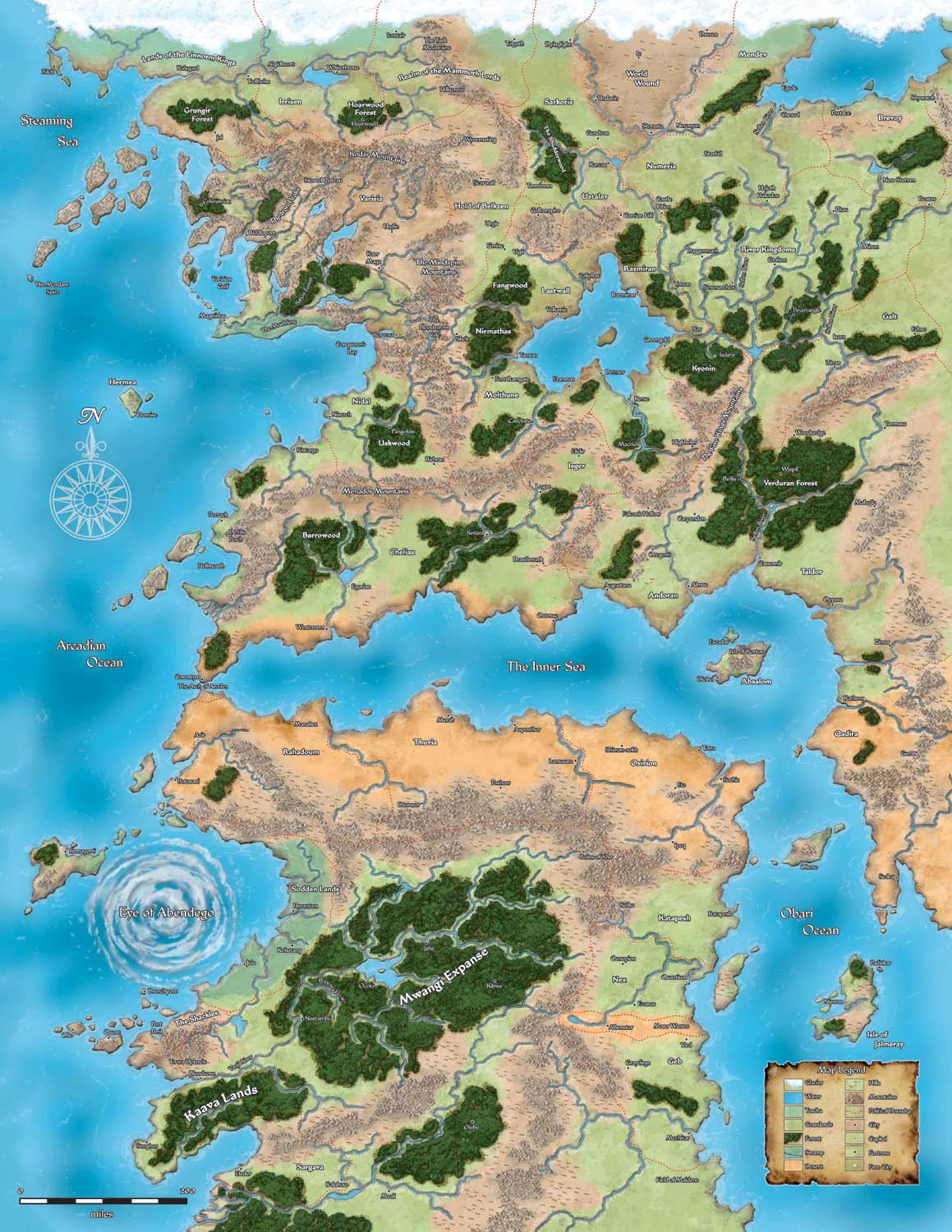One thing I've noticed, though, was that I was recycling various ideas over and over again. That's what led to the development of my "Modular Campaign Setting Elements" wiki. Which, granted, is in a perpetual state of "Coming soon" in a lot of areas. But it's also got a fair bit of content there; certainly enough to get up and running with some of the better developed ideas.
This, in theory, would give me the flexibility to still tinker, create new campaign settings, yet still slot reasonably complete modules in without much work.
But I found that even then I was recycling so much that it was a bit silly. So, I've come full circle and am now putting my modular setting elements into a framework that... well, it's just a regular ole campaign setting now. Or at least it will be when I'm done with it. The big map I mentioned in my last post is going to be the key element that ties it all together. Because it's the result of testing, retesting, and filtering through numerous ideas, it's got the advantage of being something that is reasonably tried and true; i.e., I won't need to tinker with it much because I've done enough tinkering with the major elements that they're ready to stand on their own.
Here's a few of the elements that the setting will contain.
--~--~--~--~--~--~--
The Terrassan Empire: The default, major element of the setting, and the one that will feature most prominantly. The Terrassan Empire is like a Rome Decadent; its territory is the Mezzovian Main. However, its reach has faded considerably. Far flung territories are completely abandoned by any official imperial office, army, tax-collector or any other official. It is reduced to about half a dozen semi-autonomous city-states that still report to, at least nominally, an Emperor who sits in Terrassa. Important trade considerations keep them more or less in line and more or less cooperative, but some city-states have gone to war against their brother city-states in the past, and could very well do so again. Foederati style armies of foreign mercenaries have settled within the borders, and have mixed success at patroling the lands of the empire; in many cases they are little more than brigands who hold off from major depredations just barely due to the payments that the empire continues to make to them to buy them off.
--~--~--~--~--~--~--
Kurushat: Originally concieved as an expanionist, militaristic hobgoblin khaganate, it's now been given a human option as well. This is a dictatorial regime that couldn't survive without aggressively pushing against its neighbors to distract its populace, so it's always causing trouble.
--~--~--~--~--~--~--
Tarush Noptii: A kingdom ruled by vampires. In the capital, deep under the ground, lies a fallen charnel god of some kind, the source of all vampirism. The original heroes who went to investigate the falling of the god knew that they needed to keep it contained, so they set up a vigil. Sadly, they were gradually corrupted into the Primogenitors, truly monstrous creatures that are as beyond the ken of the rest of the vampires as gods are from mortals. However, they remain quiescent, slumbering or patrolling their vast underground complex.
The shadow of the fallen god casts a pall over the entire landscape, and the capital city and its surroundings are constantly bathed in the darkness of night. Their Untouchables, a caste of highly prized and cared for servants and soldiers, do their will during the day throughout the rest of the kingdom, and the rest of the populace live lives of fear... yet they live yet, and prosper, after a fashion.
--~--~--~--~--~--~--
Baal Hamazi: I loved the idea from the "implied setting" of Fourth Edition D&D, and the tiefling empire of Bael Turath. But I couldn't just copy the idea completely, just the concept, and do my own thing with it. Baal Hamazi is the past empire, where the ruling caste are hellkin, a true-breeding human variant that has the blood of fiends running through their veins. Today, Baal Hamazi is more a concept than a reality; a patchwork of tiny kingdoms that make up the corpse of the former empire still claim to keep the glory alive, but few of them can even imagine the grandeur of their ancestors, or agree with each other on how best to encapsulate that ideal. As a consequence, expatriate hellkin are relatively common in the surrounding lands; fleeing the chaos and turmoil and petty guerilla wars that plague their formerly great nation, they now make a new life for themselves in new lands.
--~--~--~--~--~--~--
Qizmir: Speaking of ideas I loved, the Freeport expanded setting included a nation with a name very similar to this that was made up of the azhar, a transparently reskinned version of fire genasi, humans with the blood of the efreet in their veins. Like the hellkin, the jann, as I call them now, breed true and constitute a ruling caste over a much larger human population. Qizmir is a new and vibrant country, founded when a marine legion of the army of the grand Yazicid Empire were cut off from their fellows and decided to make a go of it alone, settling a new territory after first politically imposing themselves on the autochthonous inhabitants. Today, the jann are a proud and ascendent people, but they don't forget that their ancestors were, whether willing or no, deserters from the Yazicid Empire. Part of their drive to grow their kingdom is to make themselves impervious to attack should their former brethren ever return and seek to bring them back into the fold. After several generations, the Qizmiri find they have a taste for independence.













